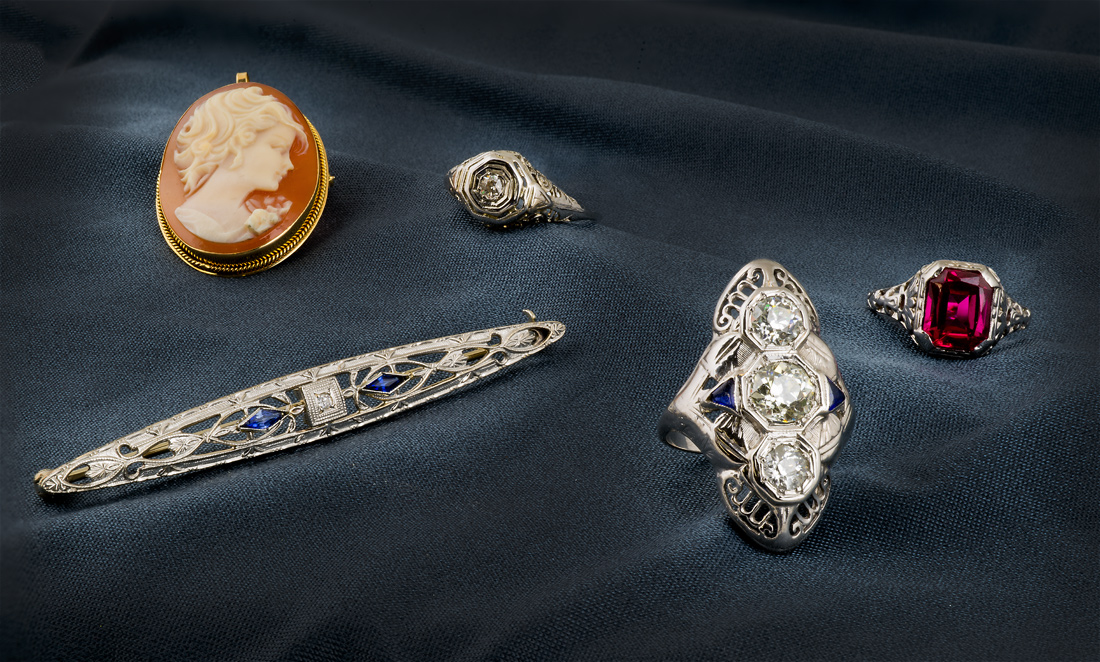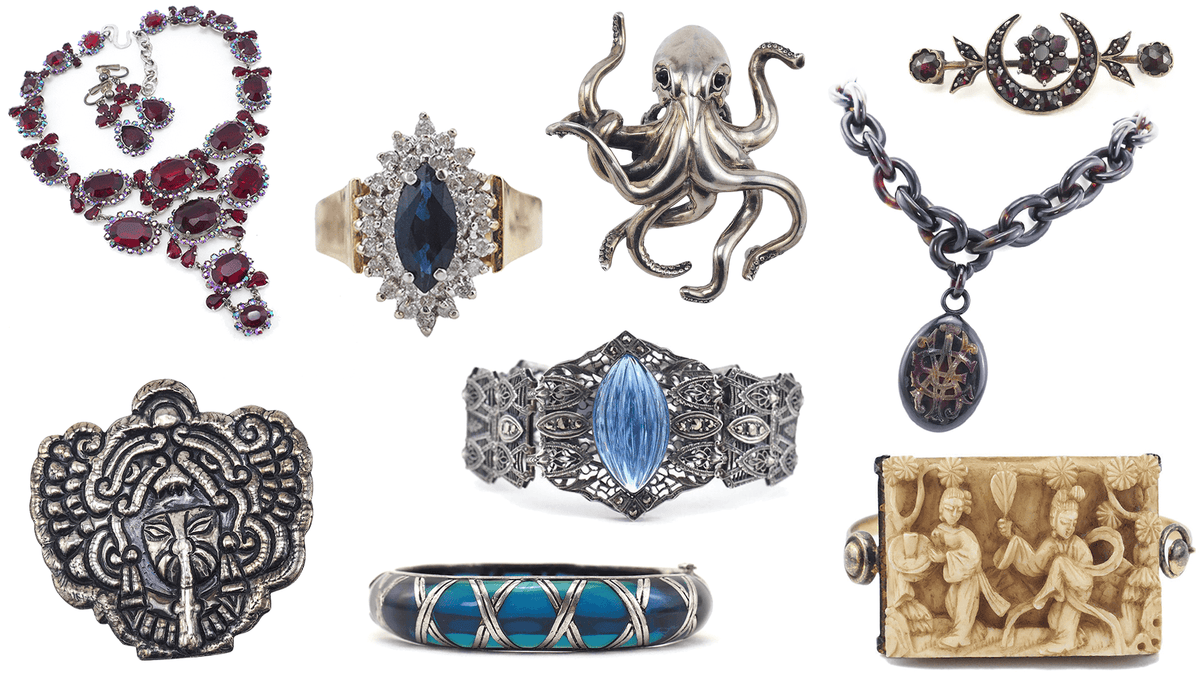Estate Jewelry Buyers Near Me: Selling Your Estate Jewelry with Confidence
Estate Jewelry Buyers Near Me: Selling Your Estate Jewelry with Confidence
Blog Article
Uncover the Rich Background Behind Stunning Estate Precious Jewelry Collections
The exploration of estate precious jewelry collections provides a special window right into history, disclosing the elaborate relationship between craftsmanship and social advancement. What secrets might these collections still hold?
The Origins of Estate Fashion Jewelry
Just how did estate precious jewelry concerned embody the abundant history and artistry of bygone periods? The origins of estate fashion jewelry can be mapped back to numerous durations of workmanship, where fashion jewelry was not simply an accessory but a representation of societal values, technical developments, and creative expressions. Each item tells a tale, frequently connected with the lives of their previous proprietors, encapsulating individual narratives alongside historic contexts.
The term "estate precious jewelry" commonly refers to pre-owned items, usually from substantial periods such as Victorian, Art Nouveau, or Art Deco. These pieces were produced with meticulous interest to information, showcasing the skill of artisans that utilized products like gold, silver, and precious gems. Unlike modern precious jewelry, estate items typically include distinct layouts that highlight the looks of their time, hence offering as substantial web links to the past.

Notable Design Eras
Throughout history, a number of notable layout eras have actually substantially influenced the development of estate fashion jewelry, each identified by distinctive styles, products, and social contexts. The Georgian age (1714-1837) noted the start of elaborate styles, usually including nature-inspired concepts and using products like gold, silver, and gemstones embeded in elaborate setups. Following this, the Victorian period (1837-1901) presented romantic themes, with emotional fashion jewelry and cutting-edge methods such as the usage of enamel and cameos.
The Art Nouveau duration (1890-1910) commemorated organic forms and the appeal of nature, making use of products like opals and pearls in moving designs. This was been successful by the Art Deco era (1920-1939), which welcomed geometric patterns, bold shades, and elegant products such as platinum and diamonds, reflecting the modernist spirit of the moment.
The Mid-Century Modern age (1940-1960) showcased structured styles and using unusual materials, stressing minimalism and performance. Each of these ages not just mirrors the artistic activities of their time yet also encapsulates the societal values and technical improvements that formed precious jewelry style, making them an interesting subject for chroniclers and collectors alike.

Famous Estate Jewelry Collections
The rich history of estate precious jewelry is beautifully exemplified by numerous prominent collections that showcase the creativity and workmanship from numerous layout periods. Among one of the most well-known is the Cartier Collection, which mirrors the high-end and technology of the legendary French jeweler. Pieces from this collection commonly include elaborate styles and exquisite gemstones, highlighting the brand's dedication to fine workmanship.
Another remarkable collection is the Lady of Windsor's precious jewelry collection, which consists of several distinctive items, including the iconic "Windsor" bracelet. This collection not only exhibits the sophistication of the Art Deco period but also lugs a rich story of love and loss, as it came from Wallis Simpson, who notoriously married Edward VIII.
The collection of the late actress Elizabeth Taylor also stands out in the world of estate precious jewelry. With countless items designed by prominent jewelers like Bulgari and Cartier, her collection embodies beauty and refinement, underscoring her personal design and affinity for one-of-a-kind gemstones.
These popular estate jewelry collections function as a testimony to the long-lasting appeal of great jewelry, offering understanding into the cultural and imaginative movements that shaped their creation.
The Cultural Importance
Estate jewelry collections hold profound cultural significance, showing not only the visual worths of their respective ages yet likewise the historical and social contexts in which they were produced. Each item typically embodies the click this site workmanship and artistic patterns of its time, showcasing the advancement of design and modern technology in jewelry production.
Additionally, these collections work as concrete links to social customs and rituals. As an example, wedding celebration bands and heirloom brooches might represent love and familial bonds, while from this source pieces adorned with particular gems can represent social or local identities. The products made use of-- whether gold, silver, or gemstones-- usually tell stories of trade, exploration, and the wealth build-up of societies.
In addition, estate jewelry can operate as historic artifacts, supplying insights right into the lives of people and the social norms they navigated. The way precious jewelry was used and valued can reveal much about gender roles, standing, and individual expression within varying social landscapes. As such, estate fashion jewelry transcends plain embellishment, functioning as a rich story of human experience, creativity, and social heritage, inviting contemporary target markets to involve with the past in a significant way.
Caring for Your Estate Pieces
Caring for estate fashion jewelry pieces needs a thoughtful technique to ensure their durability and preserve their unique characteristics. Constantly tidy estate fashion jewelry making use of a soft, lint-free towel after each wear to eliminate oils and dust.
Storage space is similarly vital; shop pieces individually in a fabric-lined box to protect against entangling and scraping. Consider utilizing anti-tarnish pouches or cloths for silver products, as this aids to decrease the staining process. In addition, stay clear of revealing jewelry to excessive moisture, severe temperature levels, or direct sunlight, which can detrimentally affect gemstones and metals.
Consulting a jewelry expert experienced in vintage or antique items can supply customized treatment choices. By implementing these practices, enthusiasts can preserve their estate jewelry's historical and visual value, guaranteeing these pieces continue to be valued for generations to come.
Conclusion
In final thought, the expedition of estate jewelry collections exposes a tapestry of imaginative expression and social importance, showing the values and aesthetic appeals of various historical durations. Each piece acts as a testament to extraordinary craftsmanship and the stories of those that when owned them. Comprehending the origins, style ages, and noteworthy collections enhances recognition for these artifacts, highlighting their role in maintaining cultural heritage and motivating continued stewardship and look after these impressive prizes.
The expedition of estate jewelry collections uses an one-of-a-kind home window into history, revealing the detailed connection in between craftsmanship and cultural advancement. The origins of estate precious jewelry can be traced back to different periods of workmanship, where fashion jewelry was not simply an accessory but a representation of societal values, technological advancements, and creative expressions.The term "estate precious jewelry" usually refers to pre-owned pieces, usually from substantial ages such as Victorian, Art Nouveau, or Art Deco.The abundant background of click for more info estate precious jewelry is beautifully exemplified by a number of popular collections that display the creativity and workmanship from different layout periods.In verdict, the expedition of estate jewelry collections reveals a tapestry of imaginative expression and cultural relevance, mirroring the values and visual appeals of numerous historic periods.
Report this page